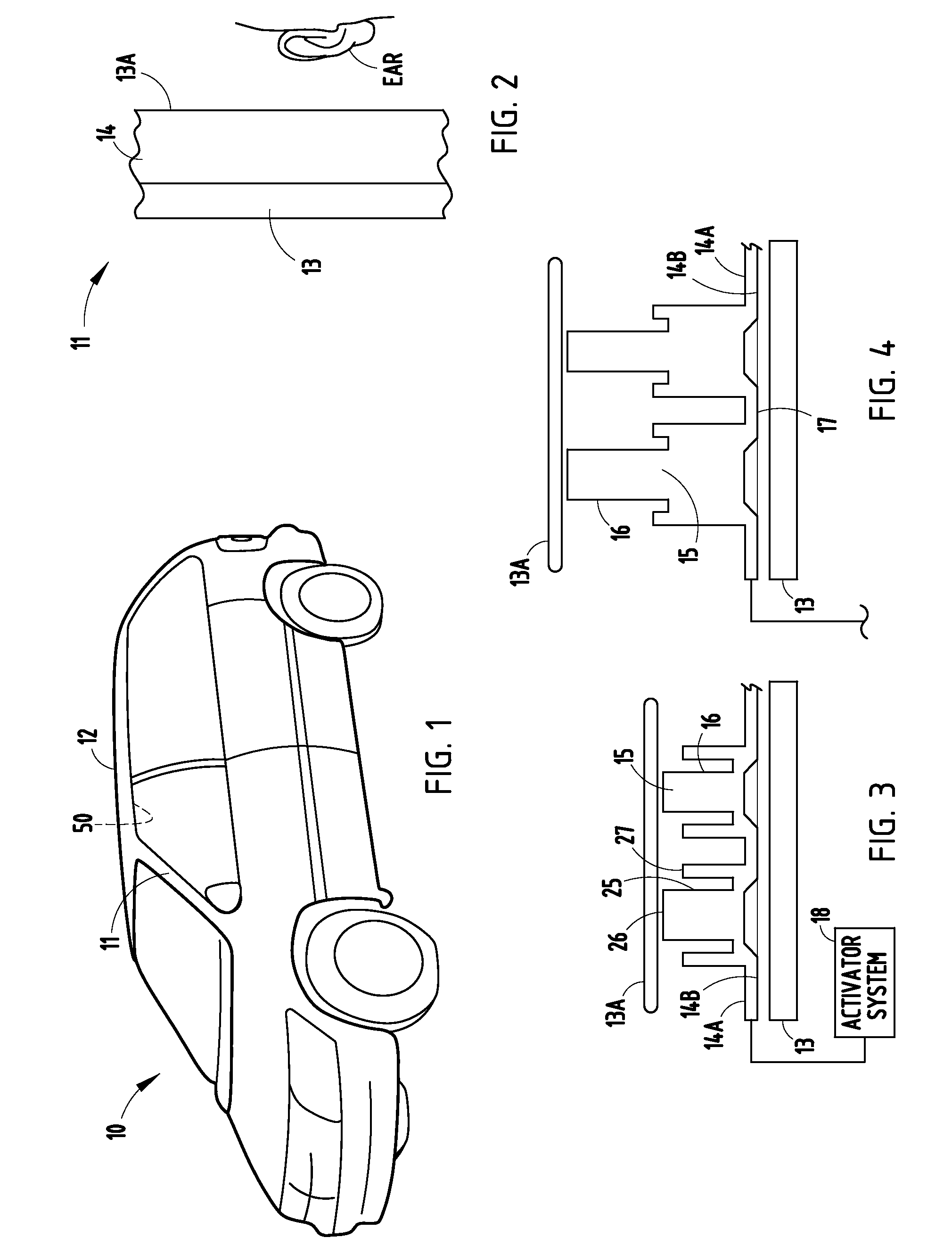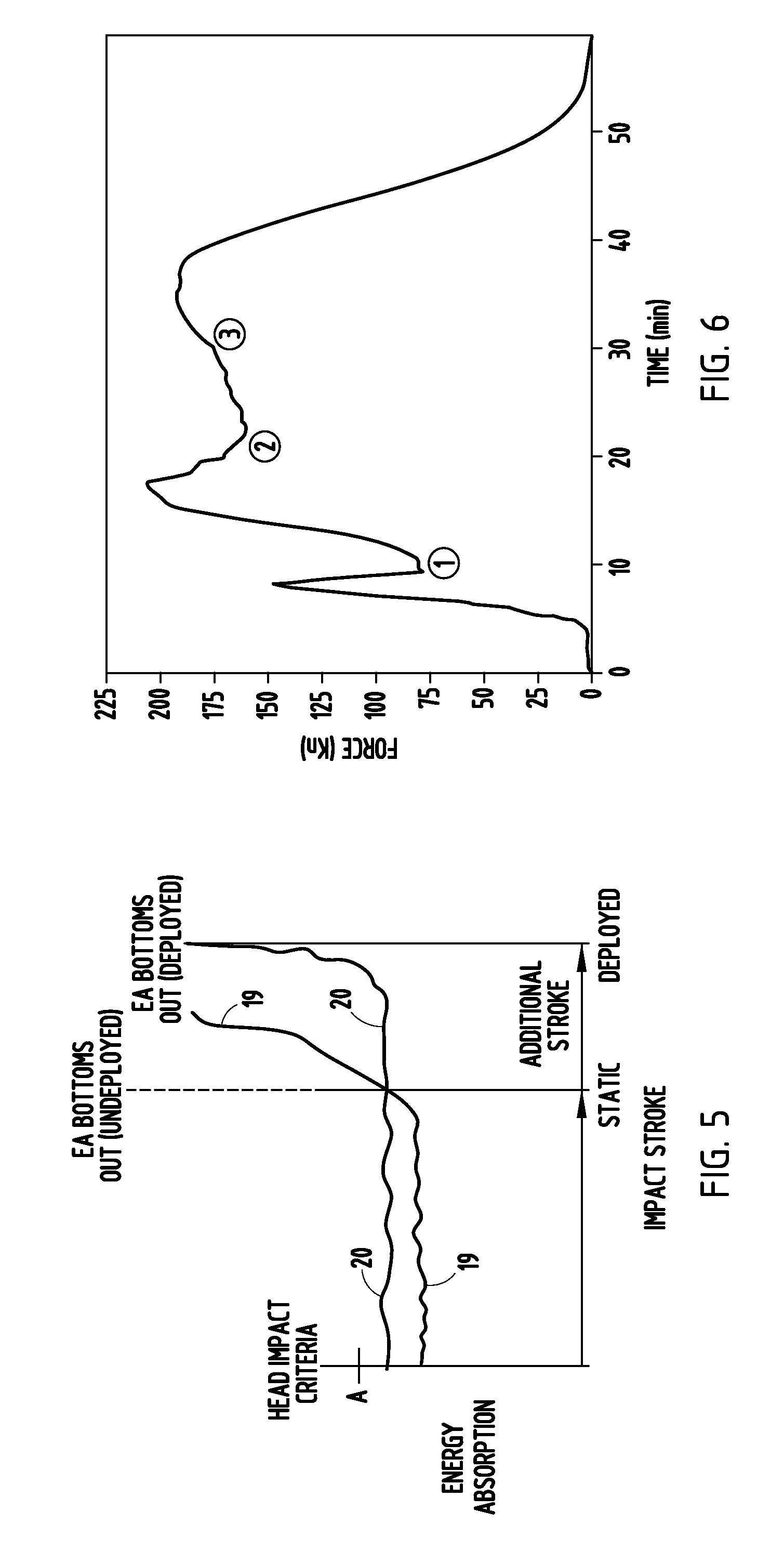Variable energy management system for pedestrian, occupant, vehicle
a technology of energy management system and pedestrian, which is applied in the direction of pedestrian/occupant safety arrangement, braking system, tractors, etc., can solve the problems of inability to reset, damage other surrounding structures on the vehicle, and high price of the device, so as to reduce the injury of passengers, reduce the impact energy, and increase the thickness
- Summary
- Abstract
- Description
- Claims
- Application Information
AI Technical Summary
Benefits of technology
Problems solved by technology
Method used
Image
Examples
Embodiment Construction
[0050]A vehicle 10 (FIG. 1) includes an “A” pillar 11 that along with other pillars supports a roof 12. The illustrated “A” pillar 11 includes a vertically-extending structural metal beam 13, a trim cover 13A aesthetically covering a visible part of the interior surface of the beam 13, and an energy-absorbing sheet component 14 positioned between the beam 13 and trim cover 13A. The component 14 can be integral with or separate from the cover 13A. The illustrated component 14 comprises a pair of thermoformed polymeric sheets 14A and 14B bonded or sealed together (see FIGS. 3-4) to define air-trapping cavities 15 within crush boxes 16 (also called “crush cans” and / or “internal structure” adapted to absorb energy, such as if a passenger's head impacts the “A” pillar during a vehicle crash). It is noted that the energy absorber could also be made by blow-molding or by adhering a thermoformed sheet to a second surface (such as to the trim cover 13A or to the structural part / pillar 11). A...
PUM
 Login to View More
Login to View More Abstract
Description
Claims
Application Information
 Login to View More
Login to View More - R&D
- Intellectual Property
- Life Sciences
- Materials
- Tech Scout
- Unparalleled Data Quality
- Higher Quality Content
- 60% Fewer Hallucinations
Browse by: Latest US Patents, China's latest patents, Technical Efficacy Thesaurus, Application Domain, Technology Topic, Popular Technical Reports.
© 2025 PatSnap. All rights reserved.Legal|Privacy policy|Modern Slavery Act Transparency Statement|Sitemap|About US| Contact US: help@patsnap.com



